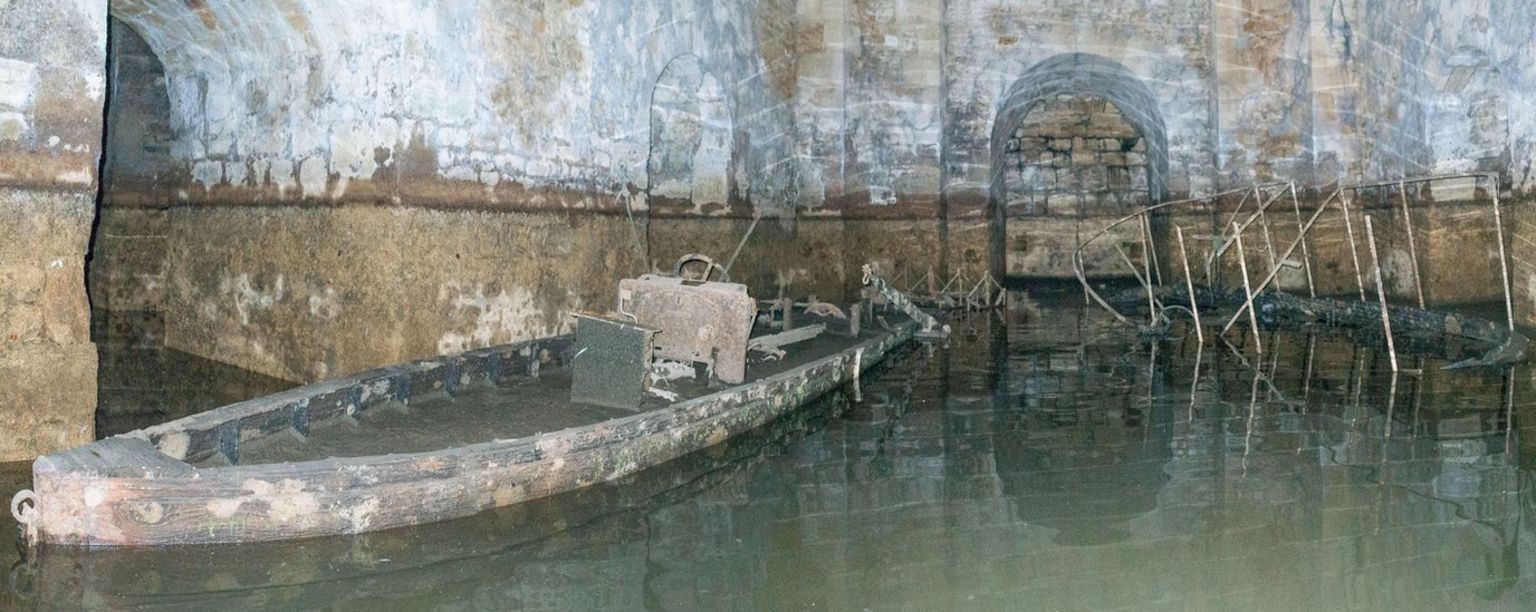Blenheim Palace dredging project reveals hidden rooms
- Published

A series of mysterious rooms have been revealed after lakes at Blenheim Palace were drained in a bid to save a bridge.
The stately home needs to remove 400,000 tonnes of silt to protect the Grade I-listed Grand Bridge.
The bridge contains more than 30 rooms that were flooded when Lancelot "Capability" Brown created lakes on the estate in the 1760s.
Head of estates Roy Cox called it "one of the most intriguing and fascinating buildings at Blenheim".
Originally designed to be a "habitable viaduct" by architect and playwright Sir John Vanbrugh in 1708, it contains ground floor rooms with fireplaces and chimneys, and a large windowless chamber that appears to be a theatre.
Discoveries range from graffiti dating from the 1760s to sunken boats used for reed cutting in the 1950s.
The scale and cost of Sir John's grand plans led to a falling out with Sarah, First Duchess of Marlborough, and he was banned from the estate.
The duchess sarcastically described one room as "for a ball if there were occasion", with records also detailing a bathing place and a boathouse.
Mr Cox said: "We're currently undertaking a full internal 3D survey as part of a major restoration project.
"It has already revealed a large number of rooms and passageways, some containing original plasterwork, stairways and potentially cooking ranges.
"Many of the lower rooms were flooded when 'Capability' Brown raised the water level in the 18th Century to create the lakes."
There is no evidence the rooms Sir John created were ever used.
The palace in Oxfordshire is a World Heritage Site and the birthplace of Sir Winston Churchill.
You may also like:
The view of the lakes and bridge was once described as the finest in England by Sir Winston's father Lord Randolph Churchill.
The current works are expected to take 20 weeks.
- Published19 October 2018
- Published13 September 2017